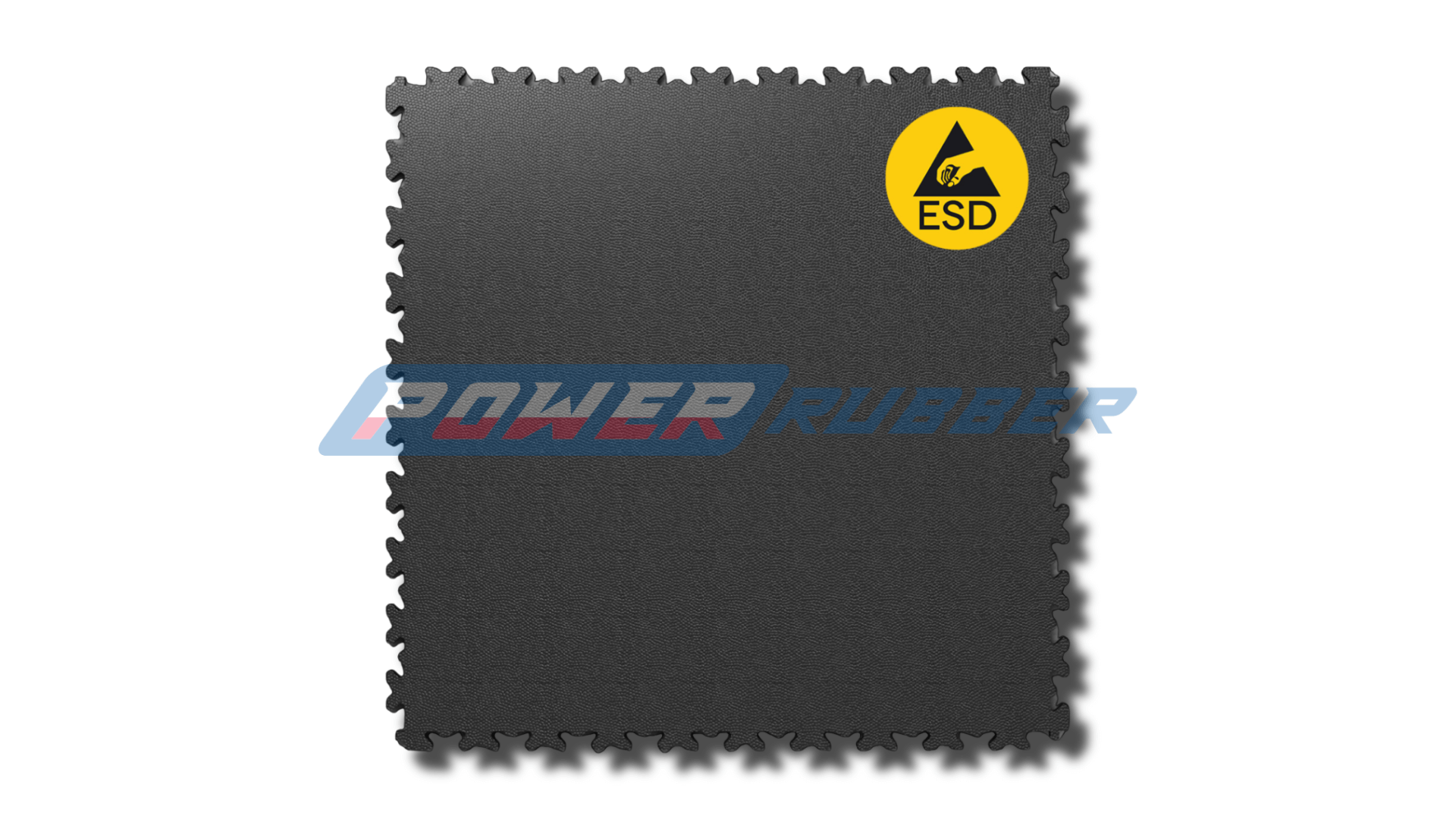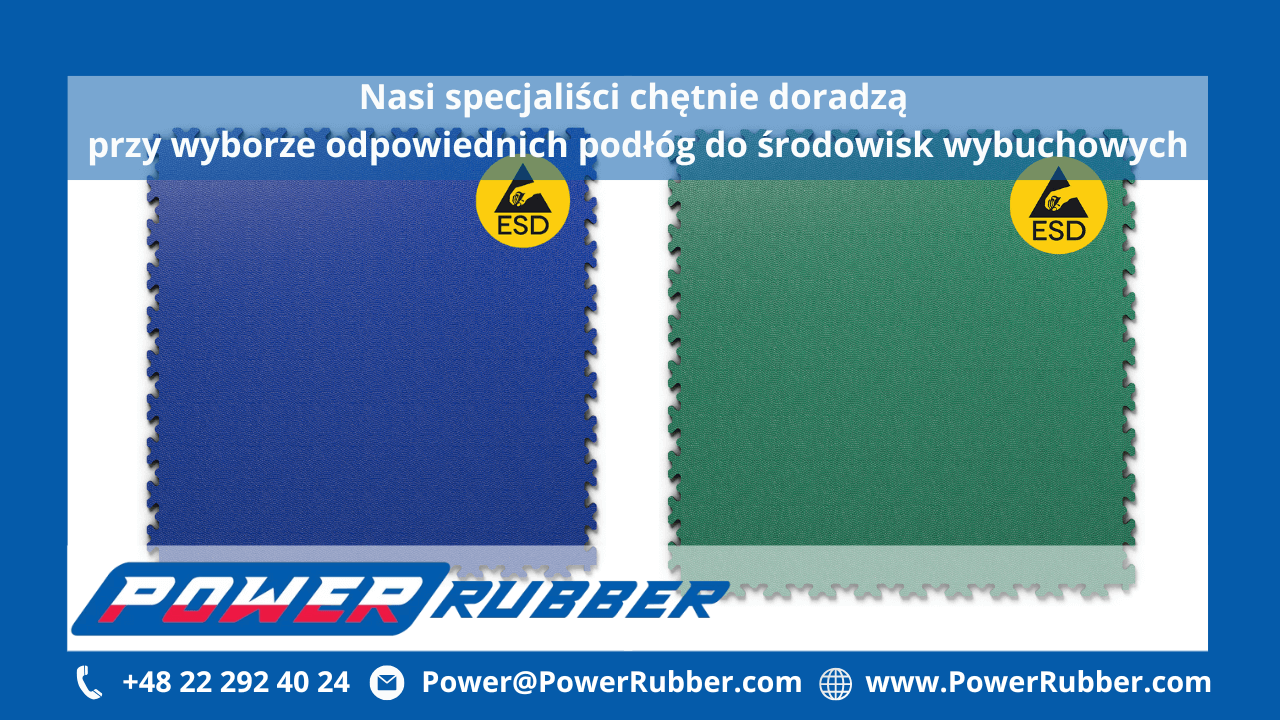Explosion-proof floors
Working in an explosive environment involves risks that can have serious consequences, including material damage, bodily injuries, and even death. Even a small spark or static electricity can lead to an explosion or fire.
In industrial environments, explosion-proof safety is of utmost importance, especially when dealing with hazardous materials. These areas require specialized solutions, both in terms of ventilation, meeting specific requirements by devices and systems, and finishing of floors.
Choosing the right flooring in explosive environments is not just a technical matter but primarily a matter of safety for people and property. Improperly selected flooring can generate electrostatic charges, which in extreme cases can lead to sparking and explosions.
In this article, you will learn about the norms that must be met by flooring in EX zones, what characterizes ESD floors, and what to consider when choosing them to select the best explosion-proof floor.
What is an explosive environment and EX zones?
An explosive environment (EX) is an area where flammable substances such as gases, dust, or liquids are present, which can create dangerous explosive mixtures with air. Under certain conditions, they can ignite and cause an explosion. Such environments can occur, for example, in:
-
chemical and petrochemical plants
-
warehouses storing flammable materials
-
the pharmaceutical industry
-
the food industry (mills, grain warehouses, confectioneries)
-
the textile industry
-
paint shops
-
laboratories
-
electronics production halls
EX zones (Explosive Atmospheres) are classifications of areas where there is a risk of explosion. They have been defined in the European Directive concerning environments endangered by explosions ATEX 2014/34/UE. They play a crucial role in ensuring safety in hazardous work environments. EX zones are qualified based on the probability and duration of the presence of explosive atmospheres.
It is worth mentioning that in all these areas where there is a certain amount of dust or gas in the air, ignition can occur due to a small spark in the form of an electrostatic discharge.
Classification of EX zones according to the ATEX directive
Hazardous zones are classified based on the presence and level of flammable substances like gases, vapors, mists, or dust in the atmosphere. They relate to the danger associated with the explosive atmosphere present in the work environment caused by the presence of these substances in the air, which can create a risk of an explosion.
The division of EX zones includes two types of explosive atmospheres:
-
gases, vapors, mists - zones 0-2
-
flammable dust - zones 20-22
In the case of the presence of an explosive atmosphere (ATEX zone), resulting from the mixing of dangerous substances, the consequences of ignition can be catastrophic in a confined space or an area with high traffic. All zones must meet specific requirements, allowing for the implementation of appropriate personnel and equipment protection measures, as well as a floor system.

ATEX Floors - What are the benefits of their use?
In an industrial environment where flammable vapors (oils, solvents, fine flour particles) are present in the air, a small spark can lead to an explosion. The ignition source can be something seemingly harmless, such as:
-
ungrounded equipment
-
lack of protective clothing with accumulated electrostatic charge
-
lack of flooring with antistatic properties
In explosive environments, it takes very little to cause an explosion. Choosing ATEX-compliant floors in rooms where electrostatic charges accumulate is one of the elements to increase the safety of workers and infrastructure in the work environment.
Why is the floor material so important for use in explosive areas?
Electrostatic discharges are one of the most common ignition sources in EX zones. From a safety standpoint, using ESD flooring in rooms is crucial because it effectively dissipates charges and prevents sparking.
ESD Floors for Hazardous Areas
Antistatic floors prevent the accumulation of electrostatic charges (e.g., during walking). They provide effective protection against explosions and sparks. This is a key element of the safety system in EX zones, i.e., areas endangered by explosive atmospheres.
Industrial ESD floors complying with the ATEX directive - benefits of use:
-
protection against igniting explosive atmospheres (minimizing the risk of explosions)
-
increased safety of workers in potentially explosive environments
-
flooring with an antistatic coating that protects electrical devices from damage
-
high resistance to chemicals
-
exceptional durability and resistance to abrasion, mechanical damage, and intensive use
-
lack of electric and thermal overload
-
proper grounding and connection
-
financial benefits (reduce expenses and material losses)
-
conductive floor coverings comply with EU and national regulations
ESD Floors for Hazardous Areas - Key Criteria
Eliminating ignition sources is crucial in areas where there is a risk of an explosive atmosphere. A suitably chosen flooring made of ESD materials that complies with ATEX requirements and international standards is characterized by key parameters such as:
Antistatic and Conductive Properties
The use of appropriate antistatic flooring is one of the safety measures. It meets the requirements of explosive zones. It is characterized by excellent conductivity, which quickly dissipates electrostatic charges to the ground, effectively preventing their accumulation and discharge. It protects people, equipment, and processes. The electric resistance should be from 106 to 109 ohms for floors dissipating electric charges and less than 106 for conductive floors.
Chemical Durability
Specialized ESD coverings are resistant to aggressive substances often found in industrial environments. They do not degrade when in contact with chemicals while maintaining their electrostatic properties. Furthermore, they effectively protect the substrate from substance penetration and contamination.
Mechanical Resistance
At Power Rubber, we provide ESD tiles that, despite intensive use, maintain low resistance. They are resistant to abrasion, impacts, point pressure, enduring significant operational loads.
Spark Resistance
Explosion-proof floors are resistant to sparking, one of the main ignition sources. They exhibit stability even under intense use or exposure to mechanical impact.
PVC PowerFloor ESD Tiles - Safe Antistatic Flooring
At Power Rubber, we offer specialized ESD vinyl tiles designed to protect against electrostatic discharges. Our homogeneous floor tiles with a consistent structure ensure the uniform flow of electrostatic charges to the grounding point. They boast high resistance to chemical, thermal, and mechanical loads. The PowerFloor ESD tiles prevent floor damage caused by falling objects. Moreover, the anti-slip surface (class R10) ensures high safety, minimizing slip hazards, even in demanding conditions. The innovative lock system facilitates precise installation. The tile surface is easy to clean, crucial in areas demanding high hygiene standards.
The PVC PowerFloor ESD tiles meet the requirements of standard IEC 61340-4-1.
PVC PowerFloor ESD tiles, with an electric resistance R g measured according to standard EN ISO 61340-4-5 (person, footwear, floor) of 3.4×108ohms, thereby meeting the requirements of standard EN ISO 61340-5-1.
Our PowerFloor ESD tiles are suitable for explosive zones and areas with antistatic requirements (ATEX).
ESD Flooring for Explosive Areas - Applications
Installing conductive flooring in areas where there is a risk of an explosive atmosphere due to the mixture of hazardous substances in the form of dust, gas, or vapors is a crucial element of technical infrastructure. ESD floors are a specialized solution that works exceptionally well in:
-
chemical and petrochemical industries - floors for the chemical and petrochemical industries are resistant to prolonged contact with flammable liquids and gases. ATEX zones 0, 1, and 2 require reliable ESD protection. Dissipative floors are installed in laboratories, production halls, and pouring zones.
-
pharmaceutical industry - a safe solution in areas with a high risk of ignition due to mixing powders or volatile substances.
-
aviation industry - ATEX-compliant ESD systems are used in ground areas such as fuel warehouses, filling stations, technical service workshops.
-
warehouses with flammable materials - explosion-proof floors find application in explosion-endangered areas like unloading, packing stations, and ammunition depots.
-
electronics industry and research laboratories - dissipative floors protect sensitive components from damage or permanent destruction. They work well in clean room environments with controlled environmental parameters.

Conductive and Dissipative Floors for Electrostatic Charge Available at Power Rubber Store
At Power Rubber, we offer high-quality ESD PVC floors designed for explosive zones. Our specialized ESD floors allow controlled dissipation of electrostatic charges from surfaces and individuals in the work area.
PVC PowerFloor ESD Tiles protect the work environment from the risk of ignition and explosions, as well as sensitive electronic equipment from damage caused by static electricity. Our ESD flooring also plays a crucial role in ensuring workplace safety, protecting staff from dangerous discharges.
Contact us at +48 22 292 40 24 or +48 505 16 03 03, or via email (power|powerrubber.com| |Power|PowerRubber.com) or through our contact form to choose a floor compliant with ATEX regulations.
